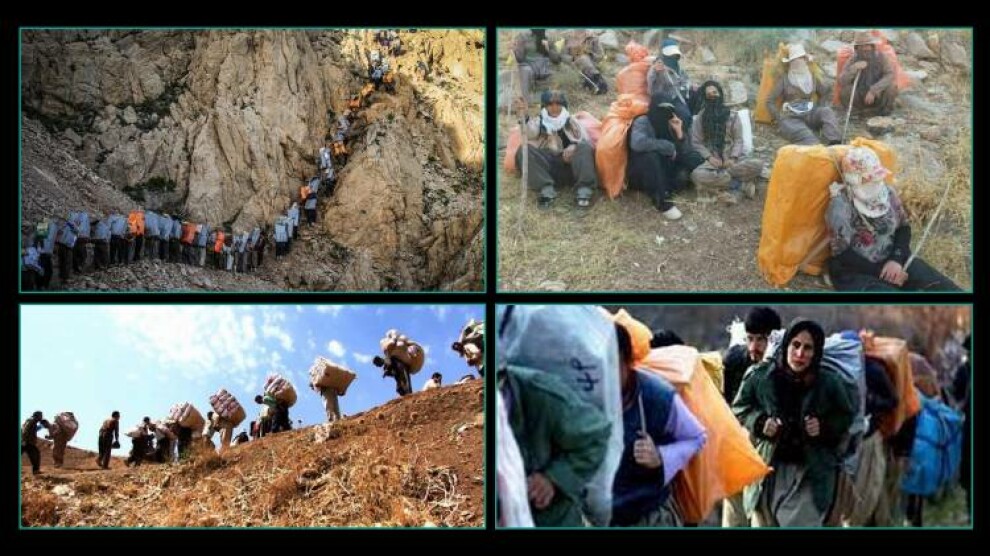Kolbars struggle for survival at borders
The number of kolbars is increasing day by day in Iran and its provinces due to the economic crisis. In the border provinces, where unemployment and poverty rates are the highest, the number of female kolbars is also increasing. The women, whose husbands or children lost their lives while working as kolbar, become kolbars to earn a living for their family.

SUHAM AKMAN
News Center- Kolbars are the people carrying goods on their back across the borders of Iran, Iraq, Syria, and Turkey legally or illegally. Most kolbars live in Iranian Kurdistan, where the Kurdish provinces are among the poorest in the country. When the word of kolbar is mentioned, people always think about the male korbars but there are also a considerable number of female kolbars. They sometimes walk for days with the goods on their back in the minefields to earn a living for their family. Although they risk their lives, they only earn 400,000 tomans (10 dollars) for their every journey.
Their numbers are increasing day by day
More than 110 women have reportedly worked as kolbars in the cities of Iran such as Paveh, Javanrud, Sanandaj, Baneh, Kermanshah, and Ravansar. The number of female kolbars is increasing day by day due to the economic crisis affecting the whole world. “When it snows or rains in Iraq, our working hours differ, but one of our journeys lasts at least 24 hours. We carry very heavy goods on our backs. For this reason, we suffer from back and leg pain. After doing this job for a while, you have to leave it, if you are still alive, because you have many health problems,” one of the former female kolbars told us.
They risk their lives for 10 dollars
Thousands of people earn a living as kolbars in the region. And working as a kolbar is considered a normal “job” in the region. Another former female kolbar spoke to our news agency about her past days. “We walked for 24 hours with the goods on our backs. Kolbars risk their lives to earn 400,000 tomans (10 dollars) for their every journey. They have to work to earn a living for their families.”
There is no official data
According to the statistics, the most of the kobars live in the poorest areas of Iran. Unemployment and poverty force the people to work as kolbars. The Iranian regime hasn’t announced any official data on the number of kolbars until now. On February 21, 2021, the country’s Etemaad Daily published an article titled “The pain of female kolbars” to draw attention to the situation of women in the region.
There are 40 female kolbars in a village
According to the article of the daily, there are 40 female kolbars only in a village. Their husbands also work as kolbars. They carry goods on their back twice a week. According to the report released in October by the Kurdistan Human Rights Network, five kolbars lost their lives in October. Two of kolbars were shot and killed by the Iranian regime forces.
